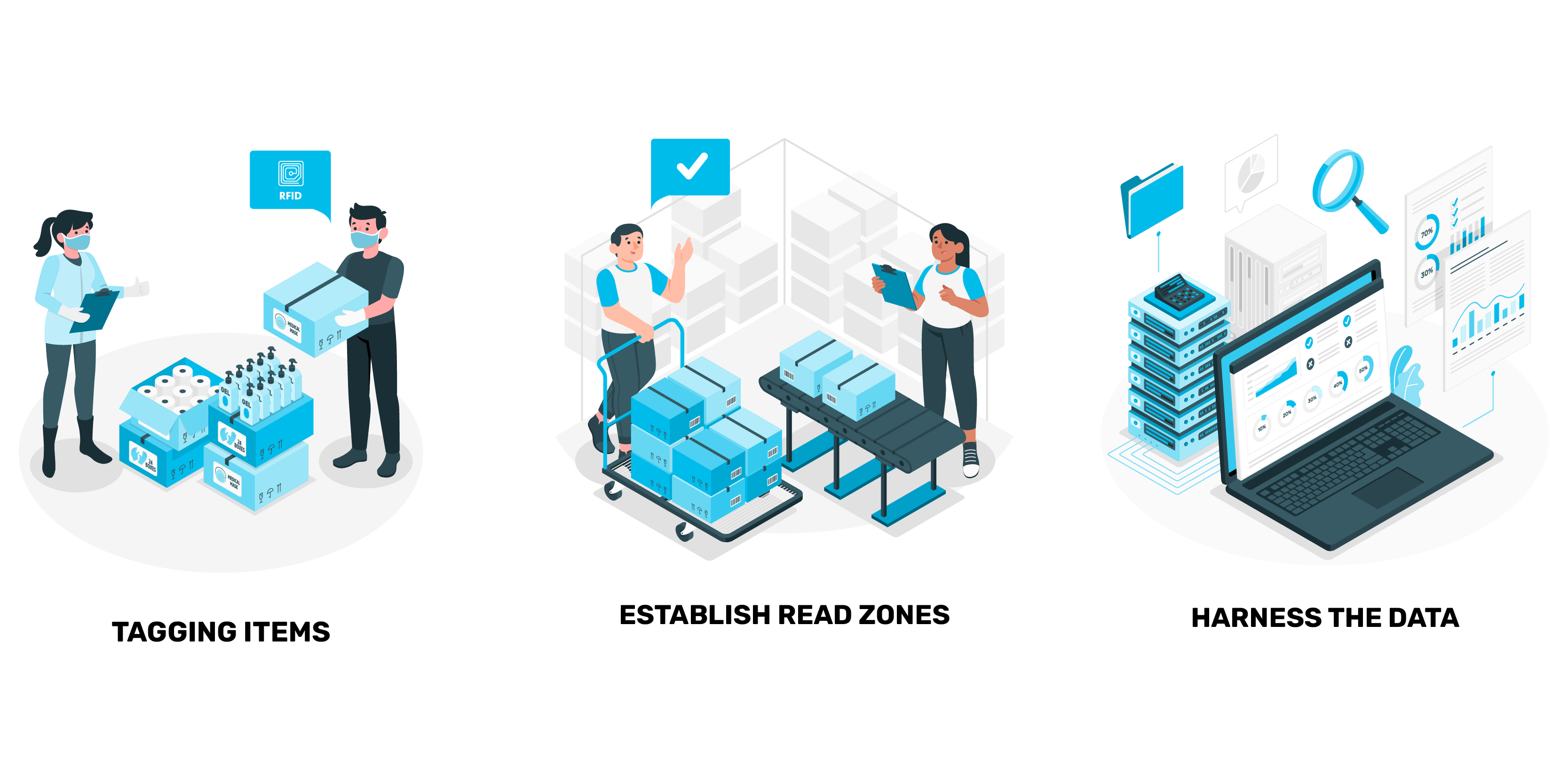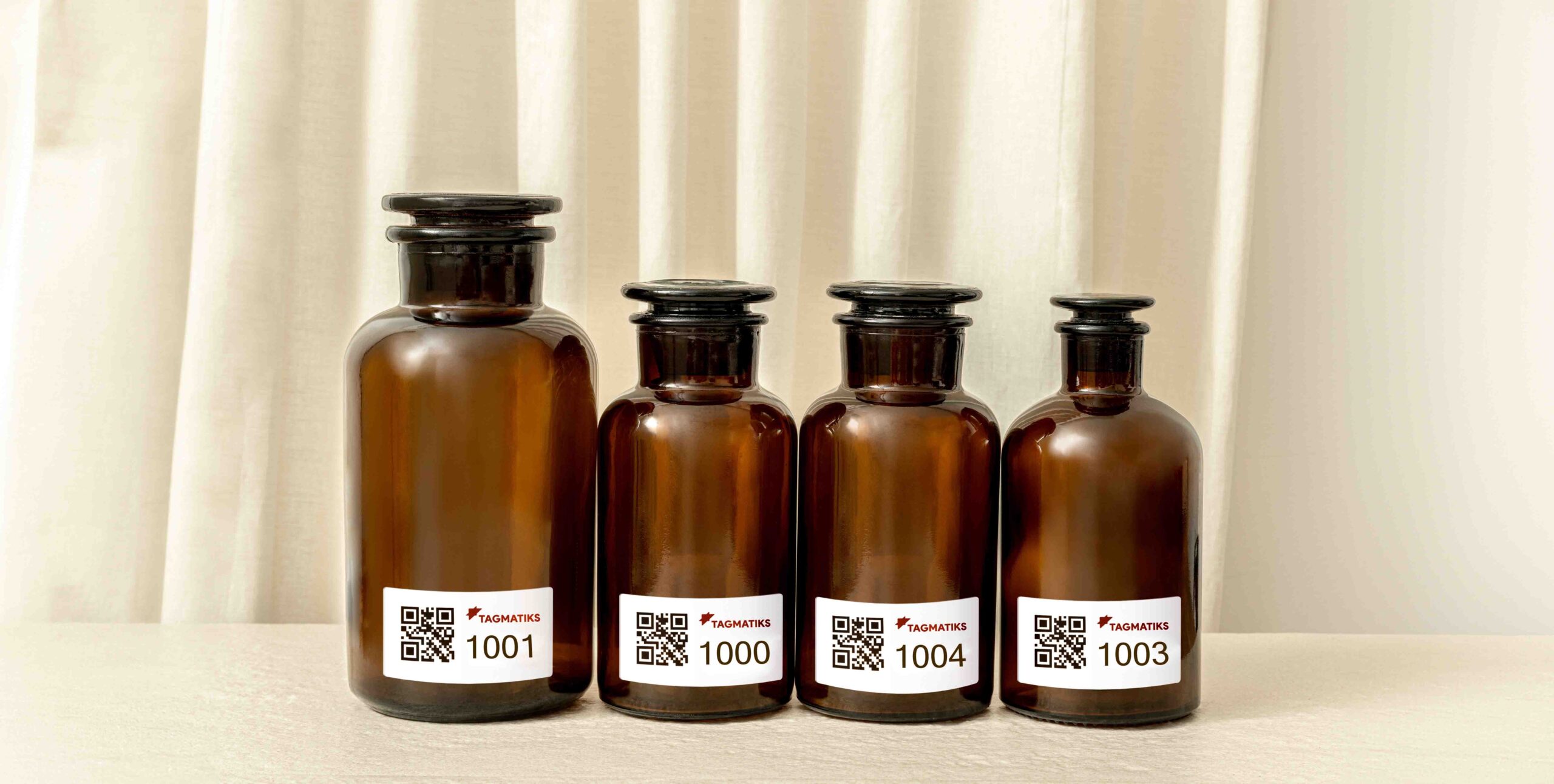Introduction:
Laboratories, whether in academic institutions, research facilities, or industrial settings, are hubs of experimentation and innovation. However, the efficient management of reagents and chemicals within these environments poses significant challenges. Traditional methods of inventory management often fall short, leading to inefficiencies, errors, and even safety concerns. In recent years, many labs have turned to Radio Frequency Identification (RFID) technology as a solution to these issues. In this blog, we’ll explore why labs are increasingly adopting RFID to keep track of their reagents and chemicals.
Before exploring the advantages of RFID, it’s crucial to acknowledge the drawbacks of conventional inventory management systems in laboratories. Numerous labs continue to depend on manual methods like spreadsheets or barcode systems to monitor reagents and chemicals. Although adequate for smaller-scale operations, these approaches become progressively burdensome and prone to errors as laboratories expand in size and complexity.
Precision and Accuracy:
One big reason labs like using RFID is because it helps them keep close tabs on their chemicals and materials accurately. Unlike old ways like writing things down or scanning barcodes, RFID lets labs see what’s happening right away. Each RFID tag is like a special code that can be linked to certain chemicals, making it easy to track them from when they’re bought until they’re thrown away. This makes it less likely for mistakes to happen and helps labs manage their supplies better.
Streamlined Workflow:
Doing things manually in labs, like keeping track of chemicals, takes up a lot of time and effort. Researchers and lab workers end up spending a long time looking for things, counting what they have, and updating lists. But with RFID, these tasks become much easier. Special cabinets and shelves with RFID tags help users find things fast and see if they’re in stock without needing to do it all by hand. This makes work go faster and lets lab staff concentrate on more important jobs. By affixing RFID tags to lab equipment and supplies, TagMatiks AT Lite simplifies the process of asset identification and tracking.
Enhanced Security and Compliance:
In labs, it’s crucial to keep hazardous materials under tight control to keep everyone safe and follow the rules. RFID helps boost security by controlling who can enter areas where dangerous chemicals are kept and monitoring what goes in and out. Only people with the right permission can get in, and if someone tries to enter without permission, alarms go off. Also, RFID keeps track of what chemicals are used and thrown away, making it easier to show that the lab is following all the rules when it’s time for checks and inspections.
Minimized Waste and Loss:
Losing chemicals because they expire, get lost, or are stolen can cost labs a lot of money and cause problems with their work. But with RFID, labs can keep better track of their supplies and reduce waste. They can set up alerts that tell them when chemicals are about to expire or when they’re running low, so they can order more on time and avoid throwing things away. Also, because RFID lets them see where everything is in real-time, it’s harder for things to go missing or be taken without permission, which helps protect the lab’s valuable resources.

Scalability and Integration:
RFID technology is great because it can work with labs of any size and fit into their current systems. Whether a lab is small or big, RFID can be customized to suit its needs. Also, RFID works well with other lab software, making it easier to manage and analyze data. This helps different parts of the lab work together better, make smarter choices, and use resources more wisely.
Let's delve into the process of implementing RFID to effectively track reagents and chemicals.
1. Assessment of Current Inventory Management Systems:
Before integrating RFID technology, laboratories must conduct a thorough assessment of their existing inventory management systems. This involves evaluating the efficacy of current methods, identifying pain points, and understanding the specific requirements and challenges unique to the laboratory environment.
2. Identification of RFID Requirements:
Once the shortcomings of traditional inventory management systems are identified, laboratories can determine the specific RFID requirements tailored to their needs. This includes selecting appropriate RFID tags capable of withstanding laboratory conditions, choosing compatible RFID readers, and assessing software solutions for data management and integration.
3. Tagging of Reagents and Chemicals:
The next step in the process involves tagging individual reagent bottles, chemical containers, and equipment with RFID tags. These tags are equipped with unique identifiers that enable the tracking of each item within the laboratory inventory. Laboratories must ensure proper placement of RFID tags to optimize readability and minimize interference.
4. Installation of RFID Infrastructure:
With RFID tags applied to the inventory items, laboratories must establish the necessary infrastructure to support RFID tracking. This includes deploying RFID readers strategically throughout the laboratory space to capture tag data effectively. Additionally, laboratories may need to invest in antennas, gateways, and other hardware components to create a robust RFID ecosystem.
5. Integration with Laboratory Management Systems:
To fully leverage the capabilities of RFID technology, laboratories must integrate RFID data seamlessly with their existing laboratory management systems (LMS). This integration enables real-time visibility into inventory levels, automated tracking of material movements, and generation of comprehensive reports for analysis and decision-making.
6. Staff Training and Change Management:
Successful implementation of RFID technology requires comprehensive staff training and effective change management strategies. Laboratory personnel need to be familiarized with RFID technology, including tag application, reader operation, and data interpretation. Additionally, laboratories must communicate the benefits of RFID adoption to facilitate buy-in and ensure smooth transition.
7. Testing and Optimization:
Before fully deploying RFID technology across the laboratory, rigorous testing and optimization are essential to validate system functionality and address any potential issues. Laboratories should conduct pilot studies to assess the performance of RFID tracking systems under real-world conditions and fine-tune parameters as needed for optimal performance.
8. Continuous Monitoring and Improvement:
RFID implementation is not a one-time endeavor but rather an ongoing process that requires continuous monitoring and improvement. Laboratories should establish protocols for regular maintenance of RFID infrastructure, periodic calibration of RFID readers, and updates to software systems to adapt to changing needs and technological advancements.
Conclusion:
In conclusion, the adoption of RFID technology for tracking reagents and chemicals is revolutionizing laboratory management practices. By offering precision, efficiency, security, and scalability, RFID systems address many of the challenges associated with traditional inventory management methods. As labs continue to embrace technological advancements to improve their operations, RFID stands out as a valuable tool for enhancing productivity, safety, and compliance in scientific research and experimentation.
Through the implementation of RFID technology, laboratories can transform their workflows, optimize resource utilization, and ultimately accelerate scientific discoveries and innovations. As the pace of research and development accelerates, leveraging RFID for reagent and chemical management becomes not just a choice but a necessity for modern laboratories striving to stay ahead in an increasingly competitive landscape.
